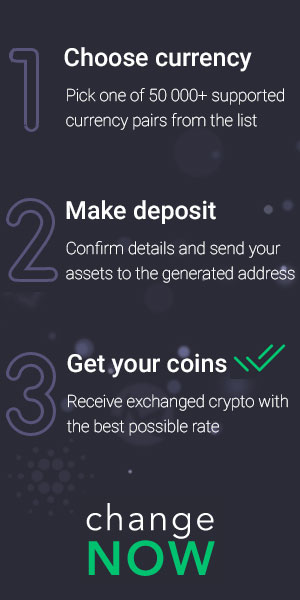If you are interested in investing or trading in the world of digital currencies, you should familiarize yourself with stablecoins.
One of these stablecoins is Tether, whose price changes just like the dollar. Of course, sometimes the price of dollar and Tether may not be the same, but this difference is not very significant.
Familiarity with Tether will help you to get help from them in times of market crisis and prevent your losses.
In the continuation of this article, we will answer the question of what is Tether and introduce the types of Tether.
Let’s dive in and explore together:
- Getting to know Tether
- Tether networks
- Tether (USDT Omni)
- Ethereum Tether (USDT ERC20)
- Tether tron (USDT TRC20)
- “EOS” Tether
- Comparison of different Tether types on different networks
- Comparison of transaction speed
- Comparing network fees
- Transfer of different types of Tether to the wallet
- Wallets for different Tether types
- Which tether is a better choice?
Getting to know Tether
Tether or “USDT” is the same digital dollar that many people use in the digital currency market. Tether is actually a stable coin whose value goes up and down exactly equivalent to the dollar.
“USDT” was first created in 2015 to help investors in the digital currency market. Because people had to convert their capital into physical dollars when the market went down in the past to avoid losses.
In this case, they would be completely out of the market after converting their capital into physical dollars. But after the implementation of the initial plan of digital dollar or types of Tether, investors can convert their capital into Tether when the market declines.
Tether networks
“USDT” is offered on different networks. Because of this, you may get a little confused when you come across these different networks.
It should be noted that Tether is not a blockchain-based coin. So it should use other blockchains.
From 2015 until now, Tether was built on different blockchains, and we will discuss the best of these blockchains below.
Tether (USDT Omni)
The first version made of all types of tethers was Omni tether. This Tether was actually on the secure blockchain or Bitcoin.
For this reason, many investors also know this Tether as Bitcoin Tether. As we said, this tether was one of the first tethers presented and therefore, it had many problems.
Some of these problems were low transaction speed, network insecurity and being attacked by hackers, high transaction fees, and network congestion.
These cases were only part of Tether’s secure problems, after which investors and exchanges abandoned its use. After some time, a new tether was introduced as a better alternative to the Omni tether.
Ethereum Tether (USDT ERC20)
Following the problems that investors had with the security of Tether in 2017, a new Tether named Ethereum Tether was finally presented on the Ethereum blockchain in Tether types.
You are definitely familiar with the Ethereum blockchain and its popularity among investors. This Tether on the Ethereum blockchain quickly replaced the secure Tether by providing high speed in transactions and low fees.
Another name for Ethereum Tether is ERC20 Tether. You may also be wondering why the other name of Ethereum Tether is ERC20 Tether?
All tokens that are created on the Ethereum blockchain have a special standard called “ERC20”. For this reason, the tethers built on the Ethereum blockchain are known by this name.
Tether tron (USDT TRC20)
Ethereum Tether continued its positive trend until 2020. In 2020, just after DeFi projects were built, Ethereum blockchain transaction fees increased.
Therefore, investors were no longer interested in using Ethereum Tether and were looking for a better alternative in Tether types.
Meanwhile, Tether TRC-20 was launched. In the past, Tron was located on the Ethereum blockchain, and after some time, it launched a separate blockchain for itself.
Tether tron quickly gained popularity by offering high transaction speeds and lower Tether transfer fees than even Ethereum Tether. In addition to these features, the Tron network has the possibility of Airdrop and awarding TRC20 rewards to its users.
Tron network tokens also have another name, exactly the same as Ethereum, called “TRC20”. In fact, “TRC20” is the standard for tokens built on the Tron blockchain.
“EOS” Tether
Tether EOS is one of the latest and most complete versions of Tether. This tether was launched for the first time in 2019.
Tether EOS claims to eliminate transaction fees for its transfers and offers the highest transaction speed to its users.
Of course, as we mentioned, this tether has just been launched and is not perfect compared to other types of tether. So, still, the best option for Tether is the Tron blockchain, which has high speed and low Tether transfer fees.
Comparison of Tether types on different networks
We mentioned above that different Tether networks differ from each other in many ways. The biggest difference between the Tether networks is related to the speed of the transaction and its fee.
Comparison of transaction speed
If we want to compare the transaction speed in the three introduced Tether networks, I must say that Tether Omni provides the weakest service in terms of transaction speed.
It takes approximately 10 minutes to 2 hours to create a new block in a secure blockchain. 2 hours is a long time to make a transaction. For this reason, traders do not use Omni Tether.
After Omni Tether, Ethereum Tether has a higher transaction speed. The transaction speed in the Ethereum network is between 5 and 10 minutes, which is a better option for traders than Tether security.
But compared to Ethereum Tether, Tether tron has a much higher speed in performing transactions. The transaction speed in the Tron network is 3 minutes. This is definitely a great feature for Tether tron for traders.
Comparing network fees
Transaction fees vary across blockchain networks. This issue is also considered very important in different Tether networks. To start the comparison, let’s look at Tether Omni. Omni Tether in comparison with Ethereum Tether and Tethertron, charges the highest fees for its transactions.
In some cases, this fee reaches 30-35 dollars, which is a large amount for a transaction fee.
The transaction fee in the Ethereum network was much lower than the secure network. Of course, this issue relates to the previous years when the Ethereum network was quieter.
Currently, due to the congestion of the Ethereum network and the increase in the price of the Ethereum currency, the cost of its transaction fees has also increased.
Some transaction fees on the Ethereum network reach up to $30. Of course, this is temporary and most likely, after the implementation of Ethereum projects, this transaction fee will also decrease.
Now we come to the Tether tron transaction fee, which is currently the lowest. In fact, the cheapest Tether transaction fee is related to the Tron network.
The Tron network transaction fee was about 10-20 cents, and with the passage of time and the increase in the price of Tron, this amount also increased a little.
The highest transaction fee received in the Tron network was $2, which is still lower than Ethereum and Omni transaction fees.
Currently, the Tron network transaction fee is about 80 cents.
Transfer of different types of Tether to the wallet
Since all introduced tethers are different from each other, you must be careful to transfer them to the wallet.
Because you have to enter the exact address of the wallet for transfer. For example, you cannot use the Omni Tether wallet address to transfer Tether tron.
To get to know these addresses, it is better to familiarize yourself with their appearance and characteristics so that you don’t have any problems in receiving or sending your tethers.
- The Omni Tether address on the Bitcoin blockchain starts with the numbers 1 or 3 or the letters “bc1”.
- The Ethereum Tether address on the Ethereum blockchain starts with 0x.
- The Tether tron address on the Tron blockchain starts with TX.
If you pay attention to these things, you can easily transfer your tethers to the exact wallet address.
Wallets for different Tether types
You need a cryptocurrency wallet to keep your tethers in a safe place. These days, many wallets support different types of Tether, some examples of which include:
Trust Wallet
The Trust wallet is the pioneer wallet service among digital currency investors and traders these days. This wallet has a mobile version (Android and IOS).
The steps to install and use it are very simple and you can easily make your Tether transfers in it.
Dedicated Tether wallet
This wallet is special for Tether and to install it, you must visit the official Tether website. Then, you register there and purchase the wallet.
Coinomi wallet
Currently, Coinomi wallet is one of the most complete digital currency software wallets that provides all its features for free to its users.
This wallet has mobile and desktop versions. It also supports all kinds of tethers.
Tether Free Wallet
This wallet is designed for Tether types and runs only on mobile phones. To download it, you can visit the Tether Free Wallet website and get it.
Atomic Wallet
Atomic wallet currently supports many coins. Tether types are just some of the supported coins in this wallet.
Like other introduced wallets, Atomic is offered in mobile and desktop versions. The best way to download this wallet is visiting the Atomic Wallet site.
Ledger wallet
The Ledger Nano wallet is a hardware wallet that you need to connect to a computer system to make your cryptocurrency transfers.
This hardware wallet is currently considered one of the safest wallets for storing digital currency. The Ledger Nano wallet supports Tether and over 100 other digital currencies.
Trezor wallet
Like Ledger Nano, the Trezor wallet is a hardware wallet. Because these wallets are offline, they cannot be exposed to hacker attacks.
So, they are considered the safest ways to store digital currency. Trezor wallet supports Tether, Dollar and Euro for storage.
Which tether is a better choice?
According to the introduction and comparison of tether types in this article, we can now make a professional choice among them to summarize.
Among the four Omni tethers, Ethereum, Tron and EOS, Tron and EOS have the best transaction speed and the lowest transaction fees for their transfers.
Therefore, in my opinion, Tether tron and Tether EOS are better choices than other types of Tether right now.
Of course, as we said, Ethereum is developing some capabilities in its blockchain network. This may soon reduce the transaction fees of this platform and increase the speed of transactions.


